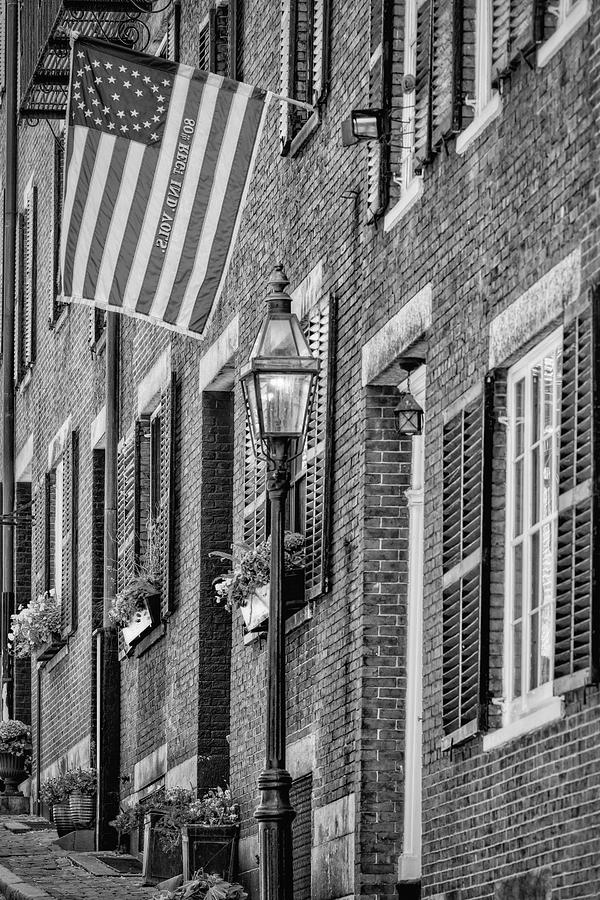
There was typically more ballast required coming into New England than going out. Piles of ballast stones (cobblestones) could then be used as needed for the reverse transit and what was left would become paving for the nearby streets. It was more useful to leave the stones/ballast than to just dump them. Ballast was used to lower ships in the water or balance varied cargo holds, they making them much more stable during long oceanic voyages. The stones mainly arrived from England as ballast in trading ships and quickly proved better than crushed shells to pave the streets and prevent mud/rutts from destroying the passability in the main trade districts near harbors. And if you've seen a few of them, you'll notice they tend to be near water/historic harbor areas. There aren't many streets that remain with original cobblestones. If they threaten to call the police on you and you were only in the cobblestone road and or most areas of the sidewalk (certain properties extend inward and thus have rights to their specific strip) you are indeed not violating any sort of law.Īlso to the racist white lady- next time you speak like that expect your face to be plastered over the city with your exact quotation so we can all know who you are.
:no_upscale()/cdn.vox-cdn.com/uploads/chorus_asset/file/7965641/a1.jpg)
I am a Boston property lawyer and am familiar with the laws. They are not taxed for the middle of the road and any upkeep is agreed upon via city ordinance. It in no way means that they can prevent entry or foot traffic on the middle of the road. All that it means is in exchange for not paving the cobblestone way (a tactic used by the residents to prevent development), that residents must pay for the sewage lines under the street and pay for upkeep in terms of maintaining the road under weather conditions. A private way by the city ordinance of Boston still allows for public foot traffic, city vehicles, and other such traffic bar heavy trucks. The middle of the road is not taxed as such. If I had been on her property or even at the base of her steps I'd agree. She claimed it was a private way and that I was unlawfully trespassing. This residence on West 6th Street was completed in 1919.Īrticle by Ennis Davis, AICP.Took a picture here quietly back in November and an middle aged/old lady up the street yelled at me and threatened to call the police while stating I was clearly not from here. Since African-Americans were not permitted to live in the city’s segregated white neighborhoods, early 20th century middle-class housing can also be found in New Town.

This shotgun residence on West 6th Street was constructed in 1916 and is representative of the type of housing constructed during New Town’s boom period around the railroad industry. Retail storefronts at the intersection of Fairfax and West 6th Streets.

The Fellowship Baptist Church building was constructed in 1947. Load King’s New Town manufacturing facility was once the site of Winn-Dixie’s early distribution operations. This 19th century Logan Street residence predates most of the neighborhood and the Great Fire of 1901. The Carpenter’s House Church of God in Christ at the intersection of Acorn and Logan Streets. The intersection of Fairfax and West 3rd Streets.Ī small frame church building on the 1700 block of West 5th Street that dates back to 1922.


 0 kommentar(er)
0 kommentar(er)
